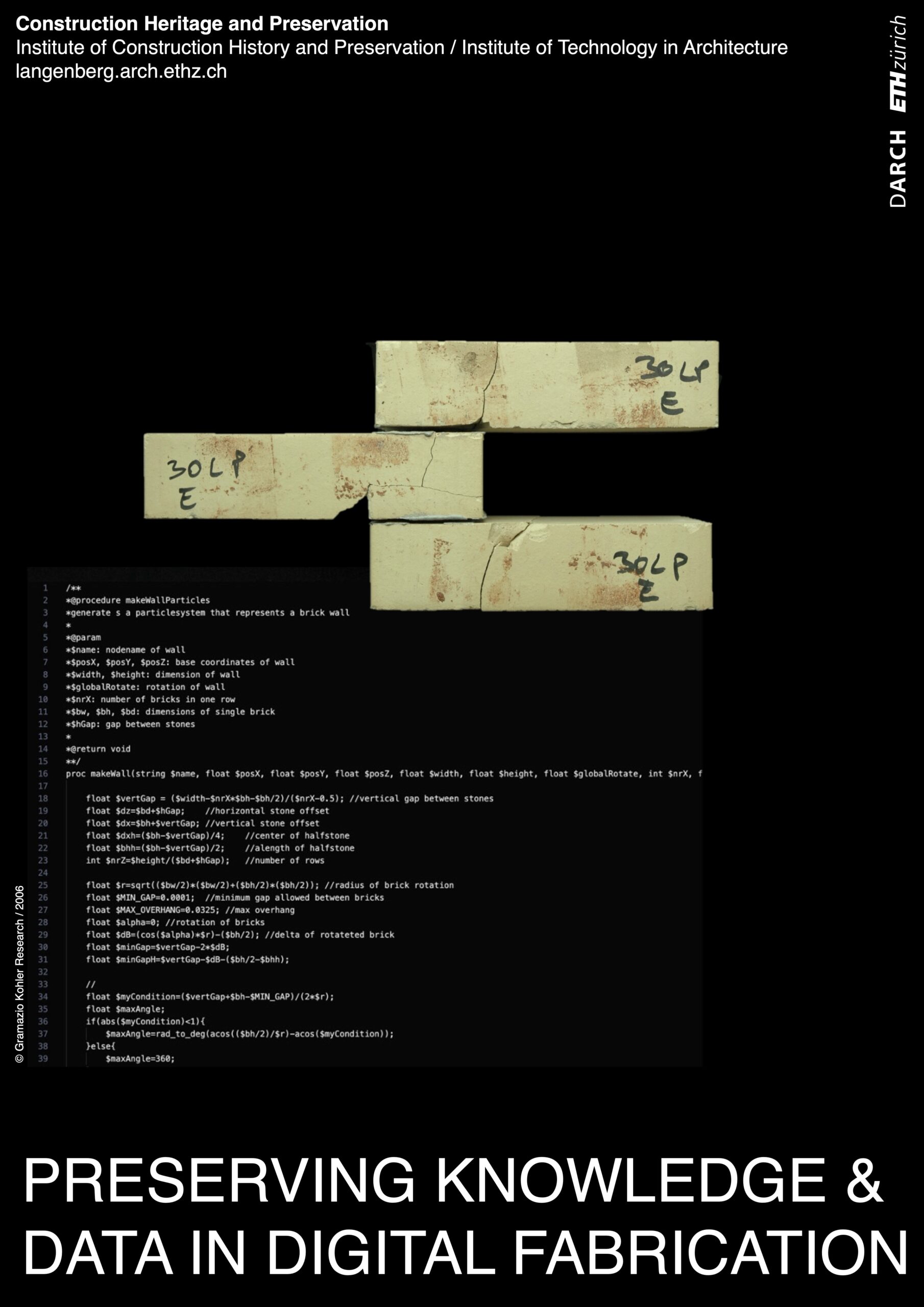
Conference Workshop by Adrian Pöllinger, Laurence Crouzet, and Li Chen (Block Research Group)
as part of the Future of Construction 2024 Symposium
How do we encode traditional building knowledge into future construction processes?
The radical turn from industrial to digital design and production has led to a paradigm shift in architecture, and it impacts the possibilities to preserve the resulting objects as much as its construction and design. Knowledge about building materials, construction techniques and production processes are currently being transferred into the digital realm. But how are buildings to be maintained or upgraded if digital data becomes lost, if no or only rudimentary information concerning material or construction is available, or if this information can hardly any longer be gathered using the methods of traditional building research?
This workshop will foster a new relation between current best practices in data management in AEC and preservation, building on first findings of the research project “Digital Construction Archive” (Chair for Construction Heritage and Preservation, Prof. Dr. Silke Langenberg, ETH, funded by the Swiss National Science Foundation). The 2008 project “Gantenbein Winery” and the ongoing “Tor Alva” project will be presented as exemplary projects showcasing the need to form new connections between the fields of Digital Fabrication and Building Preservation to assure future maintenance of digitally fabricated buildings. The participants will be asked to fill in a survey prior to the workshop on their own experiences and needs concerning knowledge management. The outcome of the survey will be summarized in an input presentation together with an introduction to relevant aspects of graph databases, ontologies in data management and the ifc standard to outline a possible workflow of documentation of digitally fabricated buildings (following the FAIR principles). A live demo will showcase potential tools and workflows and be followed by an interactive discussion.